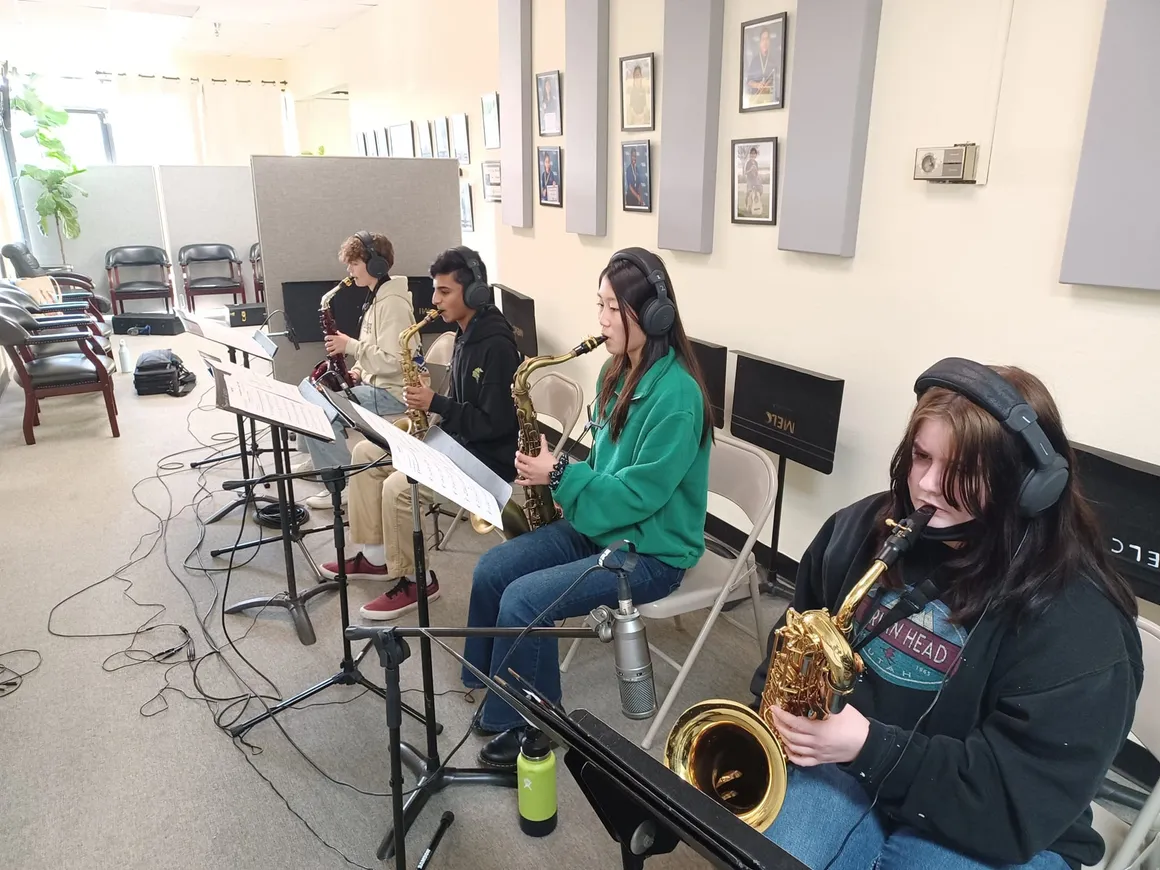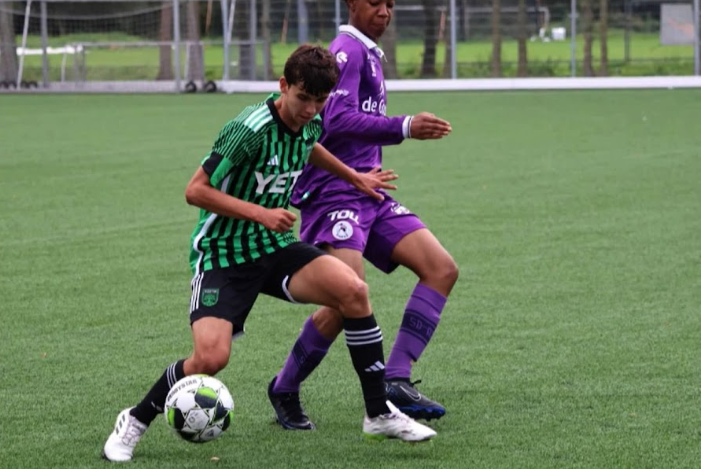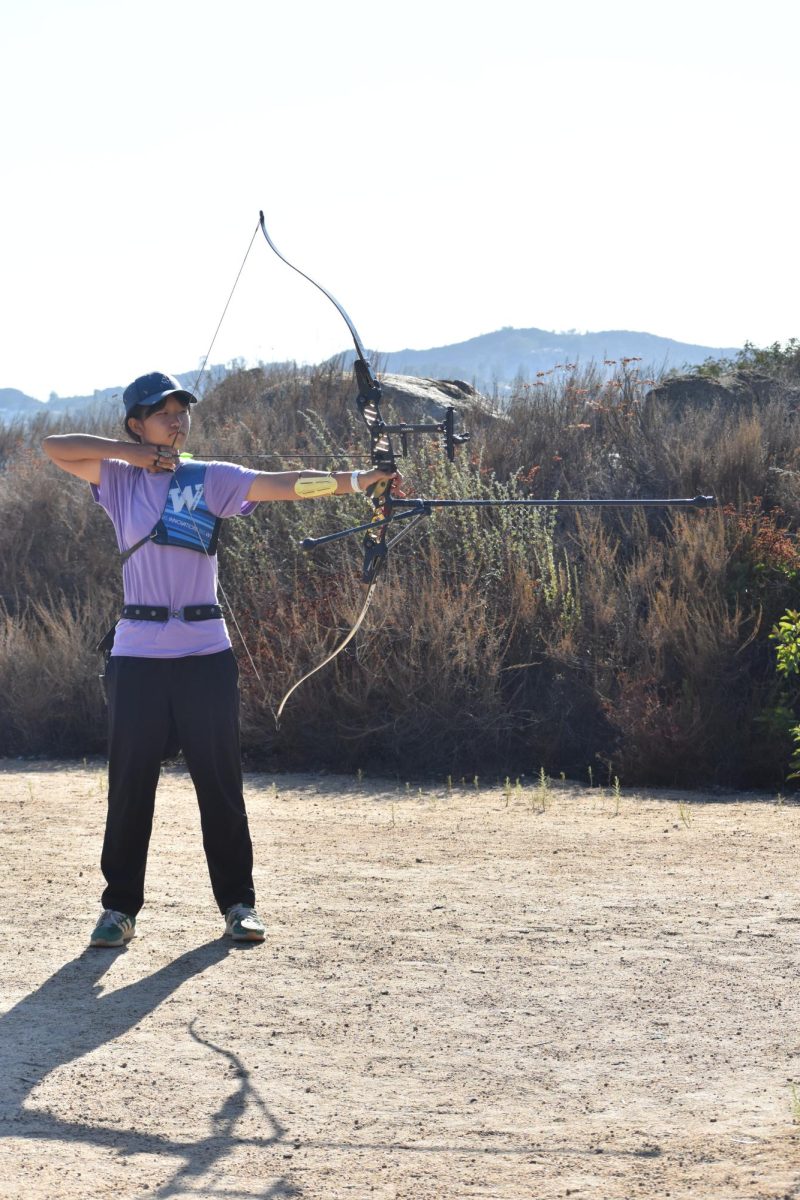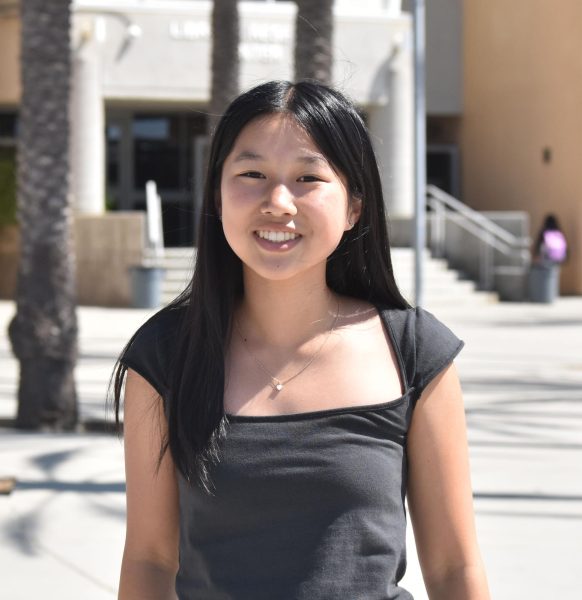
When Pauline Onishi (10) was in fifth grade, she never imagined that she would pick up any other instrument besides her flute. Now, she sat behind a mic with her tenor saxophone in hand, recording a song with the San Diego Youth Jazz Orchestra.
The song, “Tumbáo in Tunisia,” was written by a composer named Michele Fernández, specially commissioned by the San Diego Youth Jazz Orchestra. Fernández paid tribute to the late composer Dizzy Gillespie by modeling its structure after Gillespie’s song “Night in Tunisia.” The director of the SDYJO, Robert Resto, said that he wanted the song to increase the band’s popularity by putting it online for the public to listen to.
“Hopefully, this will give a little bit more highlight to the group of people in the region and throughout the country,” Resto said. “[I want people to] get a chance to hear the talent in [SDYJO].”
Resto, the music assistant at Mesa Verde, originally started the SDYJO in 2022 with a group of Mesa Verde alumni. As soon as they had their first rehearsal, he saw the passion that each member had for jazz, and he knew that they had to keep the group together.
In the SDYJO, Resto emphasizes learning about the industry of the music business. During rehearsals, not only do the students play jazz music, but they also discuss professional music etiquette with Grammy musicians.
“SDYJO was designed to bring a unique perspective and experience to music education, especially jazz, [which] we don’t really see in schools,” Resto said.
Resto’s goal for the recording was to give the students more exposure to what it’s like to be in a professional environment. Madhav Ramaprasad (9), who plays the tenor and alto saxophone, said that recording helped him learn about a key component in a musician’s job.
“It gave me an experience of what it’s actually like in a studio,” Ramaprasad said. “That’s what they do daily as a musician.”
After learning the parts for the song over winter break and practicing at Mesa Verde, the band recorded each part at Resto’s recording studio, Jan. 21.
Onishi said that recording the song for the first time was a memorable experience and it was exciting because not many students have access to special recording equipment.
“The atmosphere was really focused,” she said. “You have a set of headphones and a mic paired with you and it’s different, it’s a once-in-a-lifetime experience.”
The experience of recording their first song enabled the band members to work on their timing, precision, and note-pitch accuracy.
“One of the things that the members of SDYJO learned was that they needed to have their music down well because a lot of them were nervous and never recorded before,” Resto said. “That was a challenge for them, making sure that the music and the notes, the accuracy of the pitch, all of those things were right and checked. Recording music is what we call ‘a different beast’ because you have to have a really good, sensitive ear. Your timing has to be good.”
Although it was difficult to make the piece sound perfect, Onishi said that being able to record each individual section allowed them to correct their mistakes.
“The good thing is that we could record each one separately,” she said. “Even if you make mistakes, you can redo it and re-record it. It’s lenient and you can plug good spots into bad spots and we can redo it and overlap it.”
At the studio, the band was introduced to the equipment that put together the whole song. Each member was paired with headphones and highly sensitive microphones only used for recordings in order to pick up the instrument’s music alone.
Liam Porter (9), an alto saxophone player, said that seeing all the mics and wires required to record each instrument made recording more fun.
“It looked very complicated, but it was cool how [Resto] could play it back for us and edit it as we were going,” he said.
After each person recorded their parts, Resto had to piece the sections together on his computer. He added each layer one at a time, adjusting the volume and timing until they fit together smoothly. Although Resto has to finish adding solos to the song, he said he hopes that they’ll be able to publish it online soon.
When Onishi listened to the finished product, she was proud of the work and dedication the band put in to create something from their talents.
“It was really special because this person composed it just for us and we were the first people to play it and record it,” she said. “Now that it’s [going to be] online, it’s special to us because we know that it’s something that we did and that we are a part of.”



![Valen Miao (9) [front] paddles in a dragon boat for Chinese Youth Dragon Boat, Sept. 13. Miao has been racing for one year.](https://wvnexus.org/wp-content/uploads/2025/09/Dragon-Boat-1200x491.jpg)

